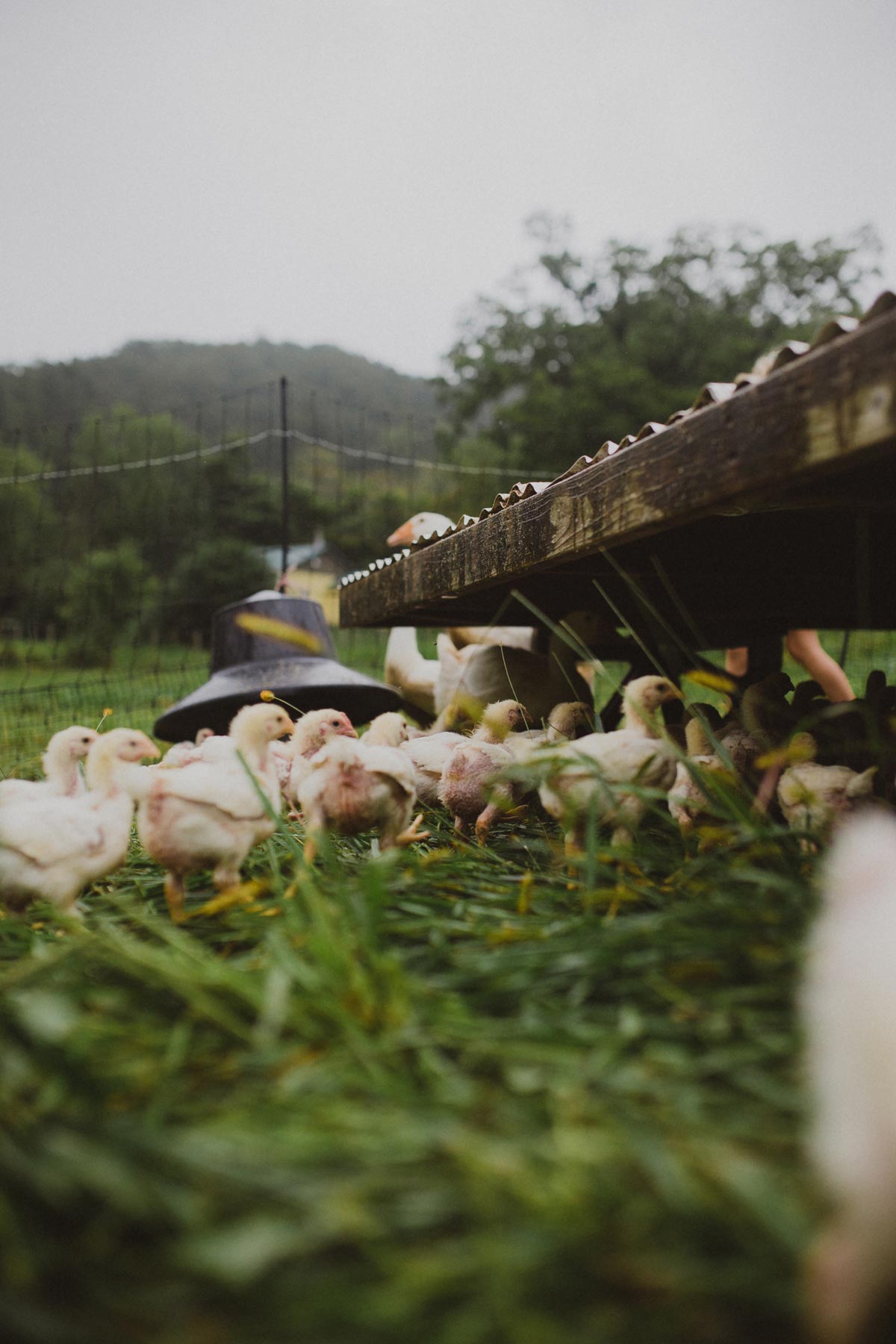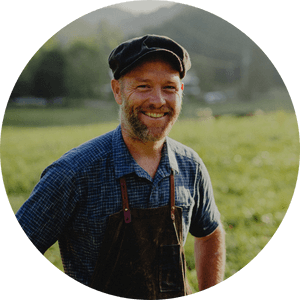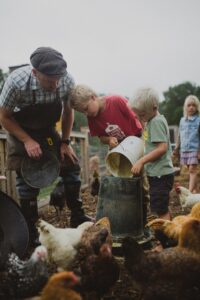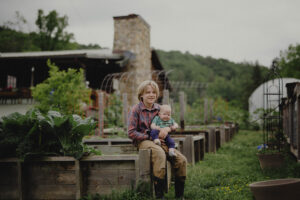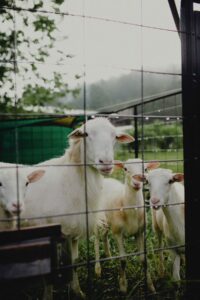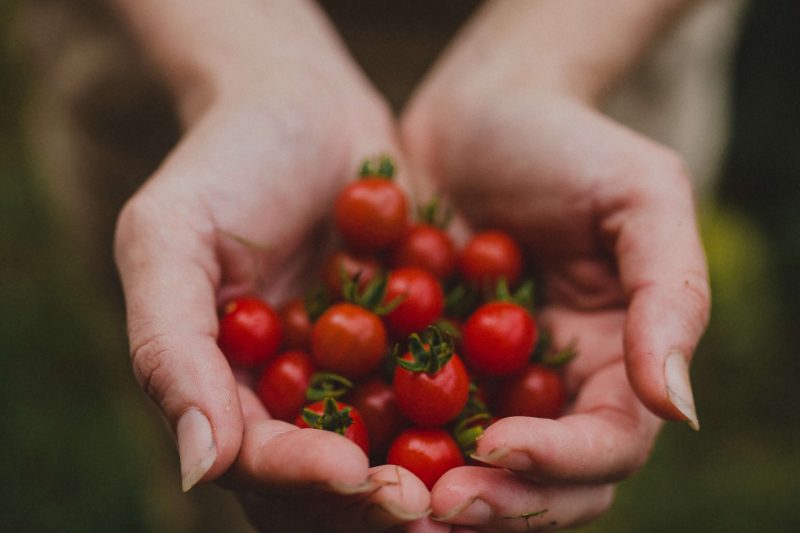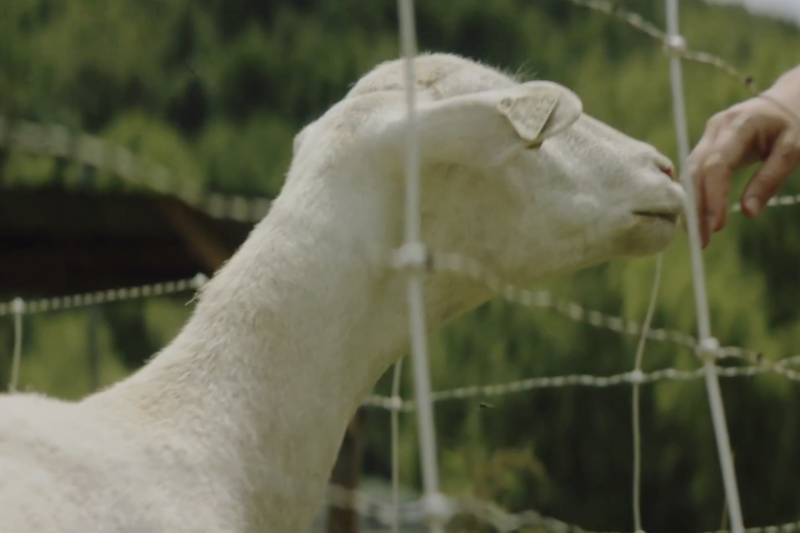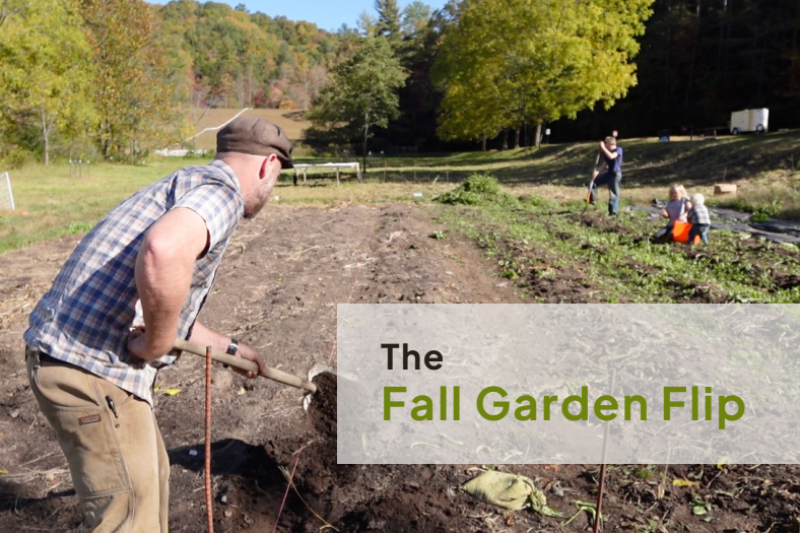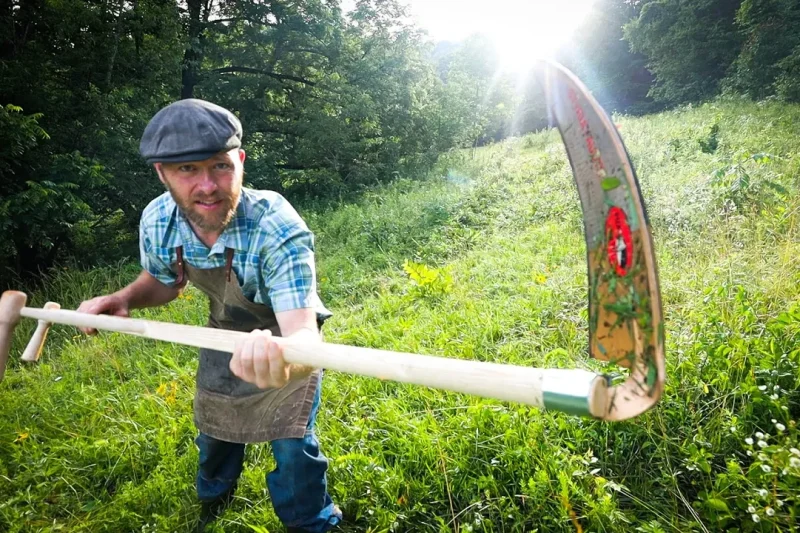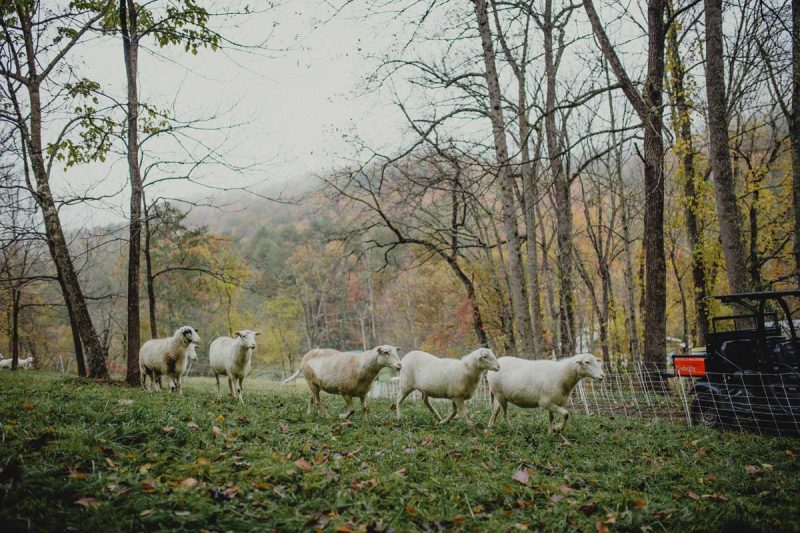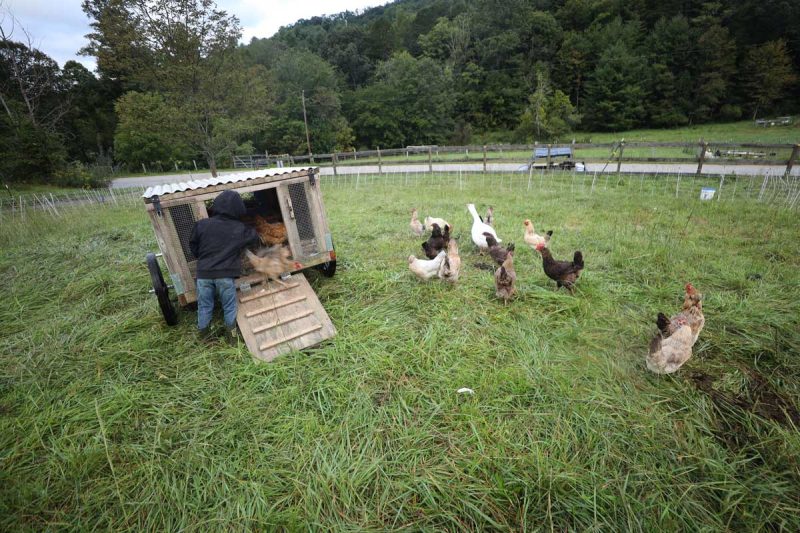I have chickens on my farm, and there are many ways to implement permaculture design concepts to increase abundance without extra labor. Whether you have chickens or are just thinking about getting some, explore permaculture with me.
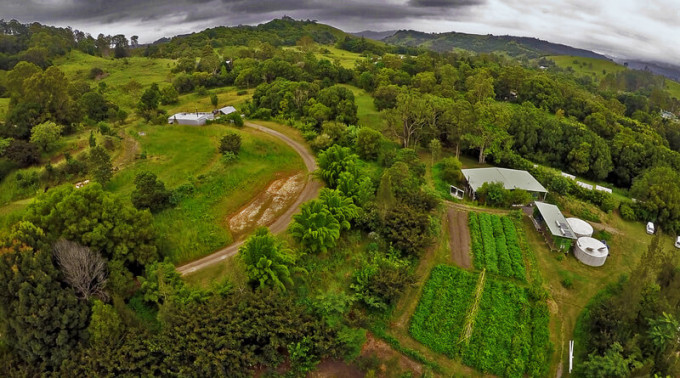
My Beginnings in Permaculture
A number of years ago, I almost gave up on farming. I was recovering from an illness and was broke physically and financially. I needed to be more efficient with my farming operation, or I was going to go bust.
Then I happened across a video by Geoff Lawton on permaculture. He was giving a tour of his farm, and his farm utilized a completely different concept than anything I had ever seen before.
Everything was working together, and it seemed like abundant perfection! Everything including cows, goats, ducks, chickens, gardens, orchards, and more was serving a purpose.
I flew from North Carolina to Australia to learn everything I could about Geoff’s permaculture design on his farm. From that, I’d like to share nine simple design concepts to consider if you want to restore your land using the permaculture approach.
“The core of permaculture is design, and design is a connection between things … It’s the very opposite of what we’re taught in school. Education takes everything and pulls it apart and makes no connections at all. Permaculture makes the connections, because as soon as you’ve got the connection, you can feed the chicken from the tree.”
– Bill Mollison, Granddaddy of Permaculture

Design Concept # 1 – Location
The key to a prime location is placing elements of your system near each other based on how they might interact and meet each other’s needs.
Examples of these elements are as follows:
- Garden
- Chicken Run
- Orchard
- Wood Pile
- Pond
- Cow Fields
An interaction example is using chickens for pest control in an orchard. If you place these elements (fruit tree and chicken run) near each other, they can easily provide for each other’s needs.
The tree needs debugging, sanitation, and fertilizer, and the chicken needs food. The two elements meet each other’s needs with minimal work from you. That’s permaculture!
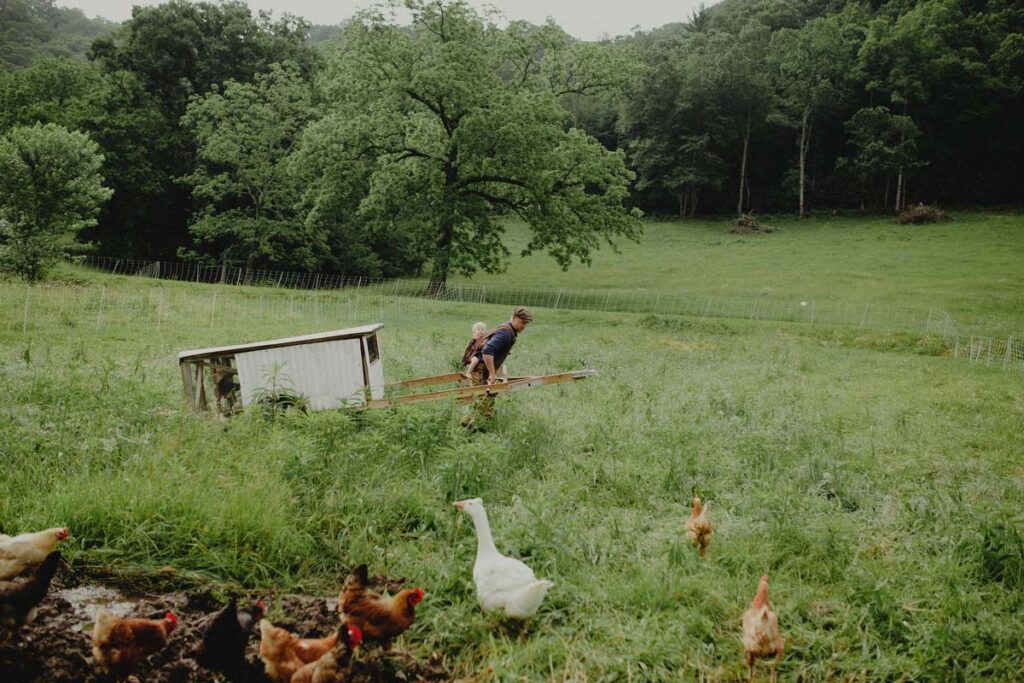
4 Steps to Making Connections and Discovering Prime Location
- Identify Your Elements – Remember, elements are the things or systems of your property. Common examples include the house, chicken run, garden, barn, woodpile, compost pile, pond, shed, pasture, etc.
- List Needs and Outputs of Each Element – The garden needs compost, fertilizer, and bug control, and it outputs vegetables, fruits, and compost material. Each element should perform as many functions as possible. Don’t worry if you don’t understand all the functions immediately. Do your best, continue to observe, study and improve!
- Review Each Element – What are some needs of this element that can be met by the output of another element? You might notice that the garden needs fertilizer, and the chicken gives manure. Congrats, you’ve made a connection!
- Draw Your Elements and Make a Map – Cut them out, and begin arranging them in various ways to explore how you could best place them to meet each other’s needs.
Pro-tip: As you begin to place your elements be sure to ask yourself, “Are there any places where this element would be incompatible with other systems?” If you live close to a public road, you probably don’t want to put your chicken system there.
Here’s even more information on homestead planning and an infographic I created to help you make connections between your chickens and common farm elements.
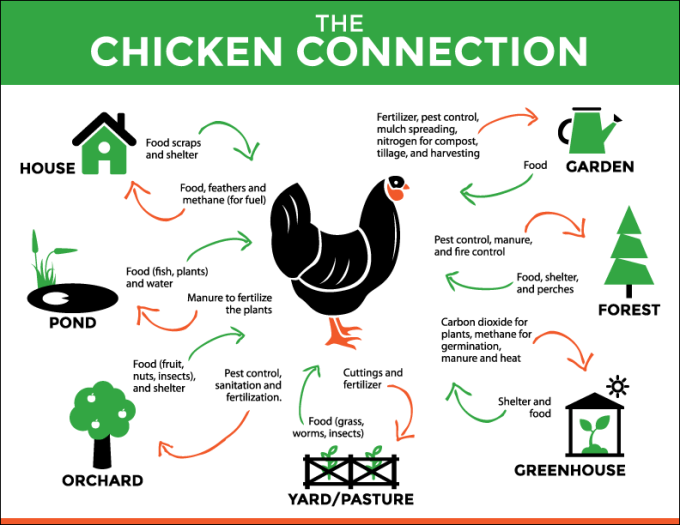
Design Concept # 2 – Basic Needs are Supported by Many Things
As one of my permaculture instructors, Chuck Marsh, would always say, “redundancy is key.” He always emphasized the importance of having basic needs such as water, food, energy, and fire protection served in two or more ways.
In the winter, I primarily heat my home with a wood stove, but I also have a furnace for backup. With chickens, we are going to want as much redundancy as we can get.
For example, to create redundancy in your chicken feeding program, you could plan on rotating your chickens through the yard or pasture, get food scraps at the grocery store, have your chickens near the garden, create worm bins, and the list could go on and on.

Design Concept # 3 – Efficiency Planning
Permaculture helps us harness efficient energy by considering three different aspects called zoning, sector, and slope.
Zone Planning Your Property
Zoning is the idea of placing elements according to how often you use them or how often you need to service them. Each element receives a zoning score.
Zoning scores ranging from 1-5 are based on how often you need to visit a particular element. High-frequency areas such as a kitchen garden, greenhouse, or chicken run are zoned low (1-2) and would be placed close by. Less frequently visited places like orchards, pastures, and woodlots are zoned higher (3-4) and are placed further away.
Estimate the number of visits for each element over a certain period of time. How often do you need to visit the chickens per week or per year? The garden? The woodlot?
Obviously, the elements with the most frequent visits will need to be as close to the house as possible.
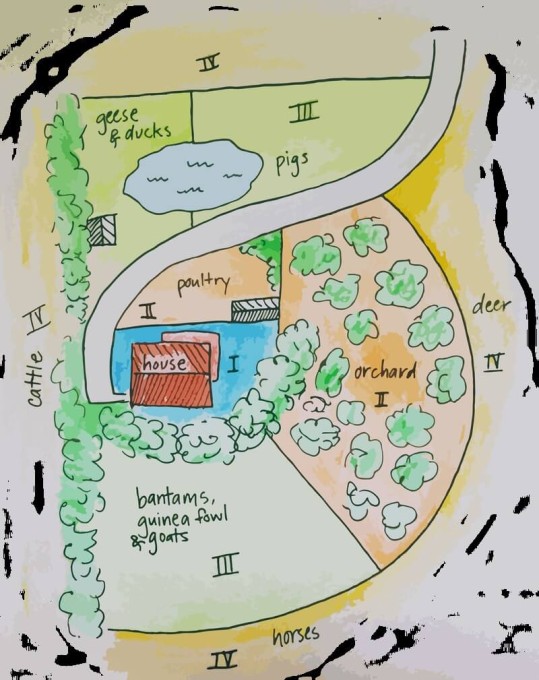
Planning for Zones
- List the elements of your system and include how many times you visit each one throughout the year.
- Create a new map of your property similar to the one you’ve already drawn for location. If possible, place your paper elements over a larger piece of paper. Now, see if you can draw your zone lines based on how often you visit each element.
- Place your cut out elements in the zones of your property.
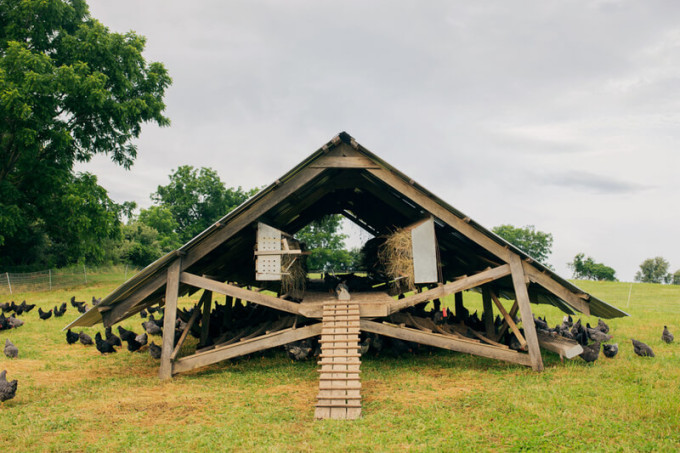
Sector Planning Your Property
Sector planning is the consideration of wild energies like the sun, wind, wildlife and natural waters. These are the natural resources you can find on your property.
When placing elements into your system, it’s good to consider fire danger areas – cold and damaging winds or hot, salty, dusty winds as well as winter and summer sun angles.
To better explain this, let’s use chickens. In a cold climate, you’ll want to face their housing towards the sunny side and block off the windy side. You might also want to install some natural tree shrubs on the windy side to keep your chickens protected in the winter.
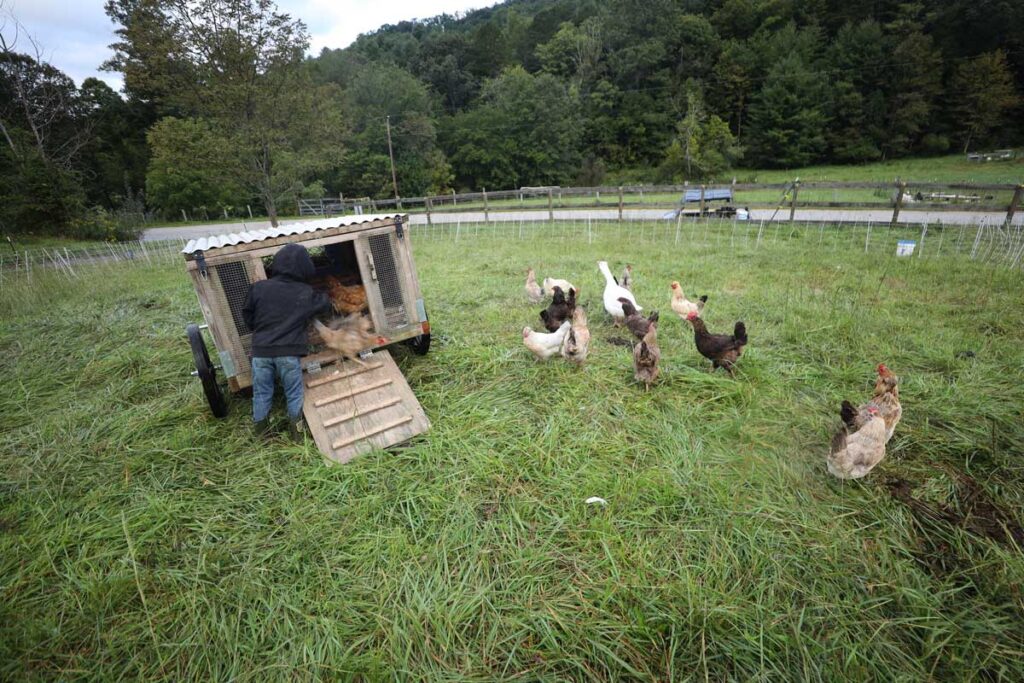
Slope Planning Your Property
Analyzing the slope of the land can be critical in placing your chickens. You may want to place your chickens below water and material sources to take advantage of gravity.
I’ve taken advantage of slope by having the local public works dump their leaves off the side of my road onto a bank. I can easily move the material downhill where I make compost for the chickens, or where I need mulch for a garden.
Another really cool thing I’ve done is place the chickens downhill from the pond. I then use gravity to create an “everflow” watering system that’s always cold, always clean, and NEVER freezes.
Planning for Slope
Take a good look at your land to discover any slope that you could take advantage of and adjust your layout accordingly.
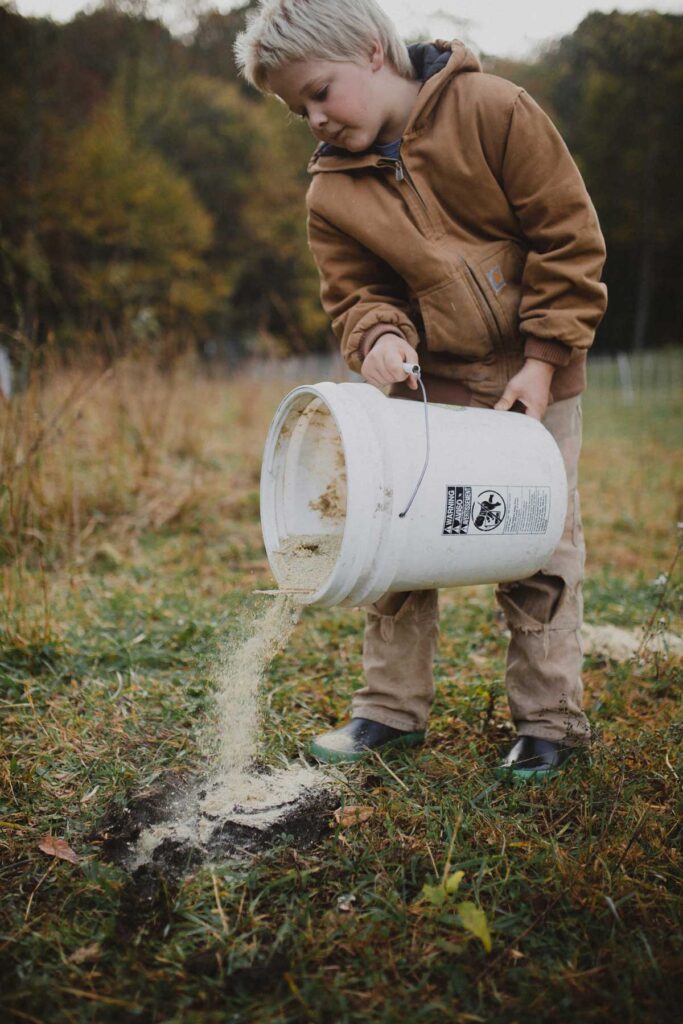
Design Concept # 4 – Using Biological Resources
In permaculture, we use biological systems, when possible, to do the work on our property! It’s important to understand that plants and animals can provide fuel, fertilizer, tillage, insect control, weed control, nutrient recycling, habitat enhancement, soil aeration, and fire control.
Chickens, for example, can replace…
- Pesticides – The chickens eat bugs and grubs.
- Machine Tillers – They till the land by scratching the soil.
- Fertilizers – What is a better fertilizer than chicken manure? (Use chickens to make compost!)
- Herbicides – Chickens have an endless appetite for weeds!
With chickens, you will want to consider what they have to offer and plan accordingly. You may want to place them in a central location so that you can take advantage of their working abilities.
You could also keep their system flexible and mobile (by using a mobile chicken coop) so they can move around from job to job.
You may want chickens on your garden plot in the early spring to fertilize and till, and then move them out to the orchard for a week of sanitizing, where they then follow the cattle during fly season!
Keep in mind that with biological resources, it’s all about timing.
Planning for Biological Resources
Take a look at your farm and make sure that your chickens are placed to take the most advantage of the work they can do. Consider having a home base for your birds, then plan on moving them around as workers of your property.
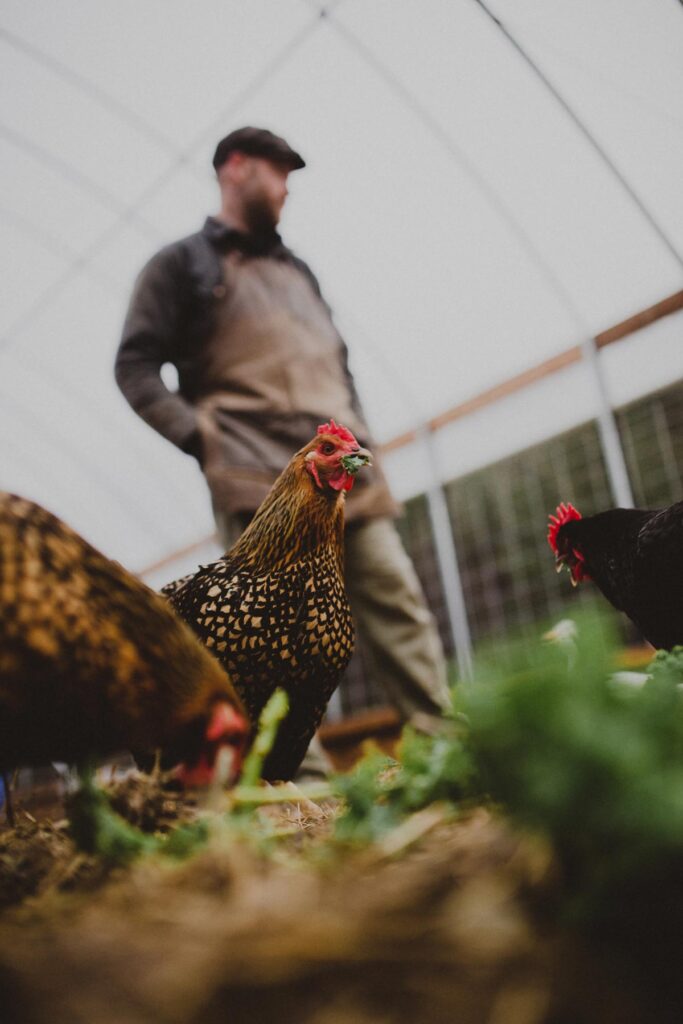
Design Concept # 5 – Energy Cycling
Permaculture strives for a local community that can provide all nutritional requirements while not sacrificing quality or destroying the land that feeds it. This is true self-sustainability.
When we can meet all of our own needs locally, we save on costly transports and packaging. Permaculture systems seek to stop the flow of nutrients and energy off the site and turn them into cycles.
For example, kitchen scraps can be fed to chickens instead of being thrown away. We can collect leaves in the fall and use them for mulch or compost in the garden. In Australia, they not only collect rain water for their gardens, they use it for their drinking water.
Planning for Energy Cycling
When considering chickens, we want to think about how to use them to keep energy on our homestead. Double check your element placement to take the most advantage of energy cycling.
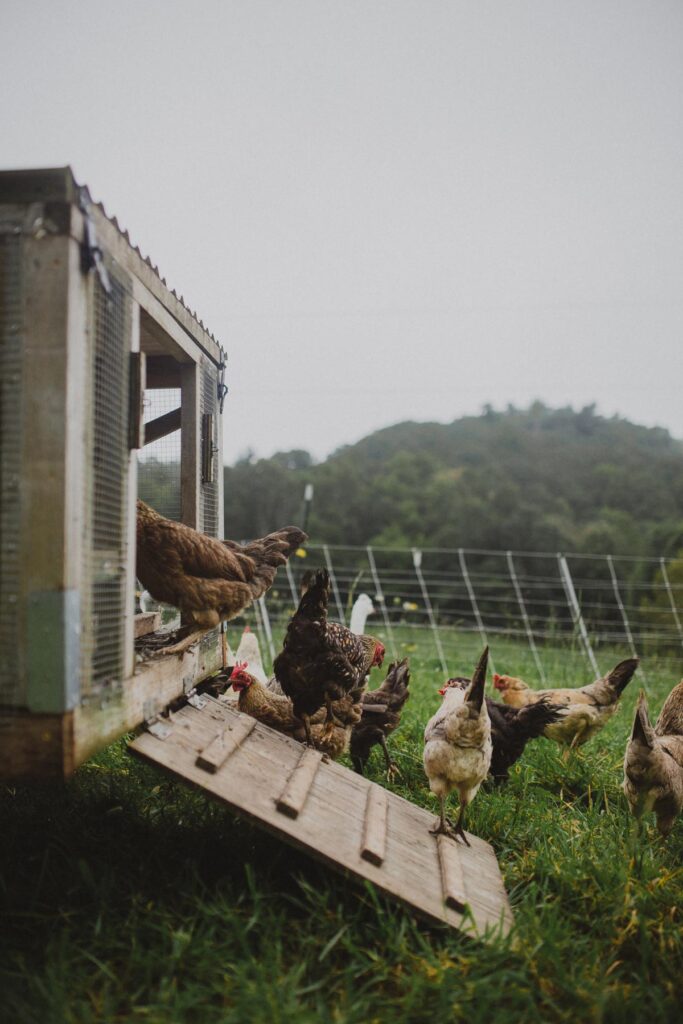
Design Concept # 6 – Small Scale Intensive Systems
Permaculture teaches us that it’s best to start small and intensive and go from there. Going small means using land efficiently, and the site stays under control.
Bill Mollison gives wise advice to those wanting to know where to start in managing their property: “If you want to know how to control your site, start at your doorstep.”
Stay close to the house and work towards developing a small, intensive system. Don’t worry about doing everything at once.
Starting Small with Chickens
- Start with just 6-12 layer chickens. (More on getting started with chickens here.)
- Buy them from a local breeder if possible as you’ll have more support.
- Buy a hardy and common breed that lays eggs (Rhode Island Red, Barred Plymouth Rock, Buff Orpington, Black Australorp)
- Buy or build a chicken tractor for their housing. This type of housing has access to the ground and is mobile. (Here are five different coop ideas, and here are my chicken tractor plans.)
- Use a temporary electric net. (Learn how to set up electric fence/netting here.)
- Buy GMO-free or organic feed and let them eat “free choice”.
Planning for Small Scale Intensity
Take into consideration your minimum operation and go from there.
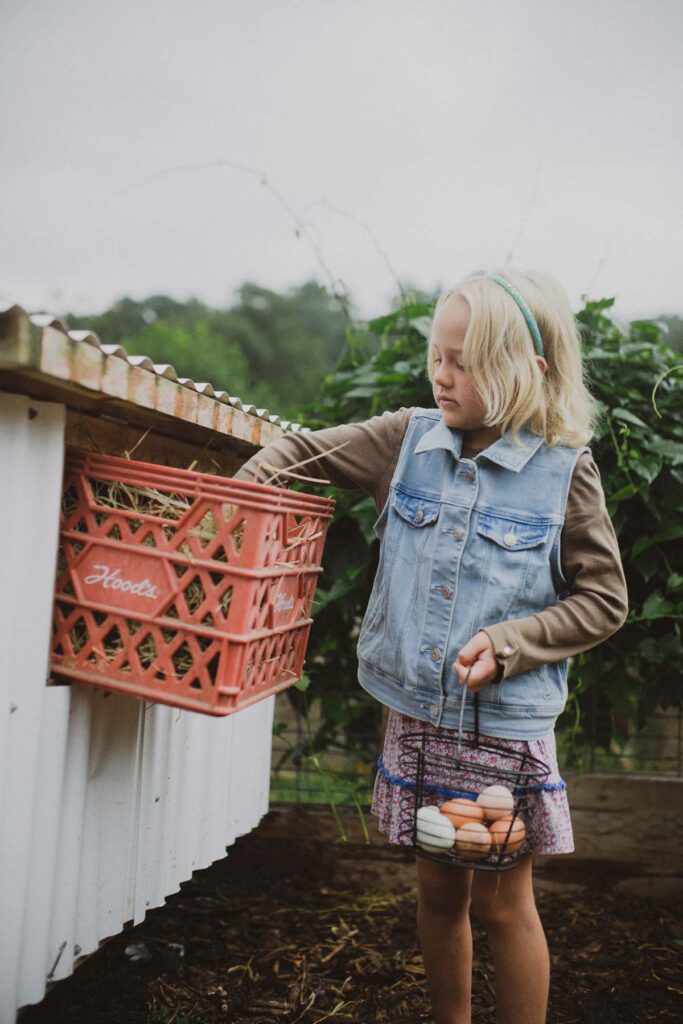
Design Concept # 7 – Diversify
Permaculture values the diversity of species for the benefit of a more secure food system all year long. When planning your chicken operation, you’ll want to be as diverse as possible to successfully extend your seasons and enjoy their products year-round.
Ways to Diversify Your Chickens
- Select early, mid, and late-season breeds. For example, you may want to have a few chickens that lay well in the winter and some that do better in summer’s heat.
- You could use the same breed of chicken, but spread out your hatching times, or buy new chicks at different times instead of all at once.
- Select breeds that give the most of what you’re looking for naturally.
- Select multi-purpose birds that are good for meat, laying eggs, and for working.
- Use techniques of preserving for year-round food – freezing, canning, and cool storage.
- Consider regional trade at different altitudes or latitudes for a variety of food.
Planning for Diversity
Take a moment and consider how you might diversify your flock based on the suggestions above.
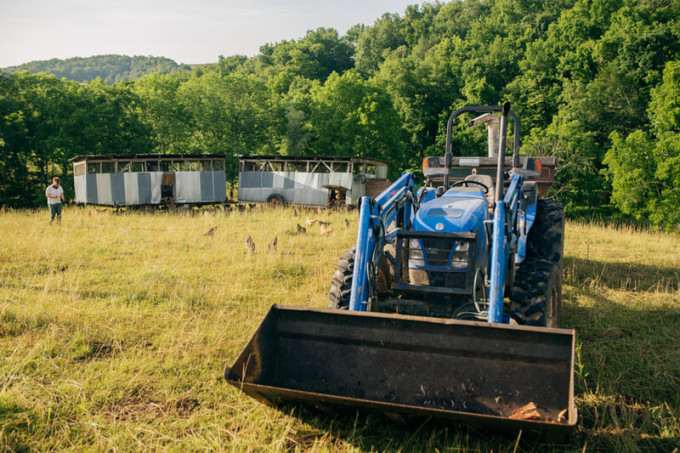
Design Concept # 8 – Edge Effect
Edges are the boundaries between two ecologies – land/water, forest/grassland, crop/orchard. Edges are more productive areas because they can tap the resources of both systems.
Permaculture design seeks to take advantage of this edge effect whenever possible. Look at the historic placement of our settlements. Often, settlements lie between foothills, forests and plains.
In our overall homestead design, we want to place our homes and livestock in these sweet spots.
Consider how you might take advantage of an edge with your chickens. Could you place part of their run in your woods, and the other part of their run in your yard?
If you have a larger homestead, you could run your chickens in paddocks along the edge of the woods. If you’re in town and beside the road, could you run the chickens next to the road?
Take Advantage of the Edge Effect
Take a minute and identify some possible edge effects.
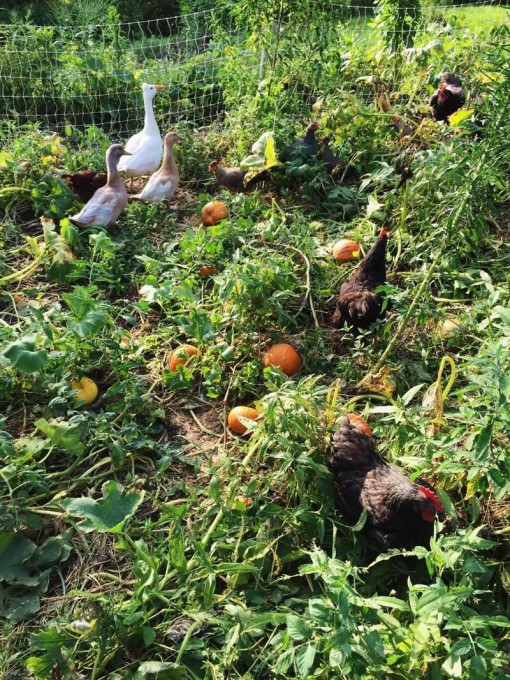
Design Concept # 9 – Problem = Solution
Selah, the farm manager at Geoff Lawton’s Zaytuna Farm in Australia, taught us: “The core of the problem is the seed for a solution.”
Permaculture loves to take a problem and turn it into a solution. Often, it boils down to how we look at things. Everything works both ways. Every resource is either an advantage or a disadvantage, depending on how we look at it.
Let’s look at the problem of weeds and slugs in the garden. These pests can be detrimental for our garden harvest, but when you start looking at those weeds and bugs as a food source for your chickens, everything changes. Suddenly, those weeds and bugs are a blessing, not a curse.
Planning to Turn Problems Into Solutions
Identify the problems of your homestead and think about how those problems may be a solution for something else.
- Got boggy land? – Then build a pond or plant water crescent!
- Got a shady backyard? – Install shade loving plants!
Now that you have some basic design principles, I hope that you can move forward with your chicken operation with confidence.
Here’s a poster I made to show the working power of ONE chicken:

